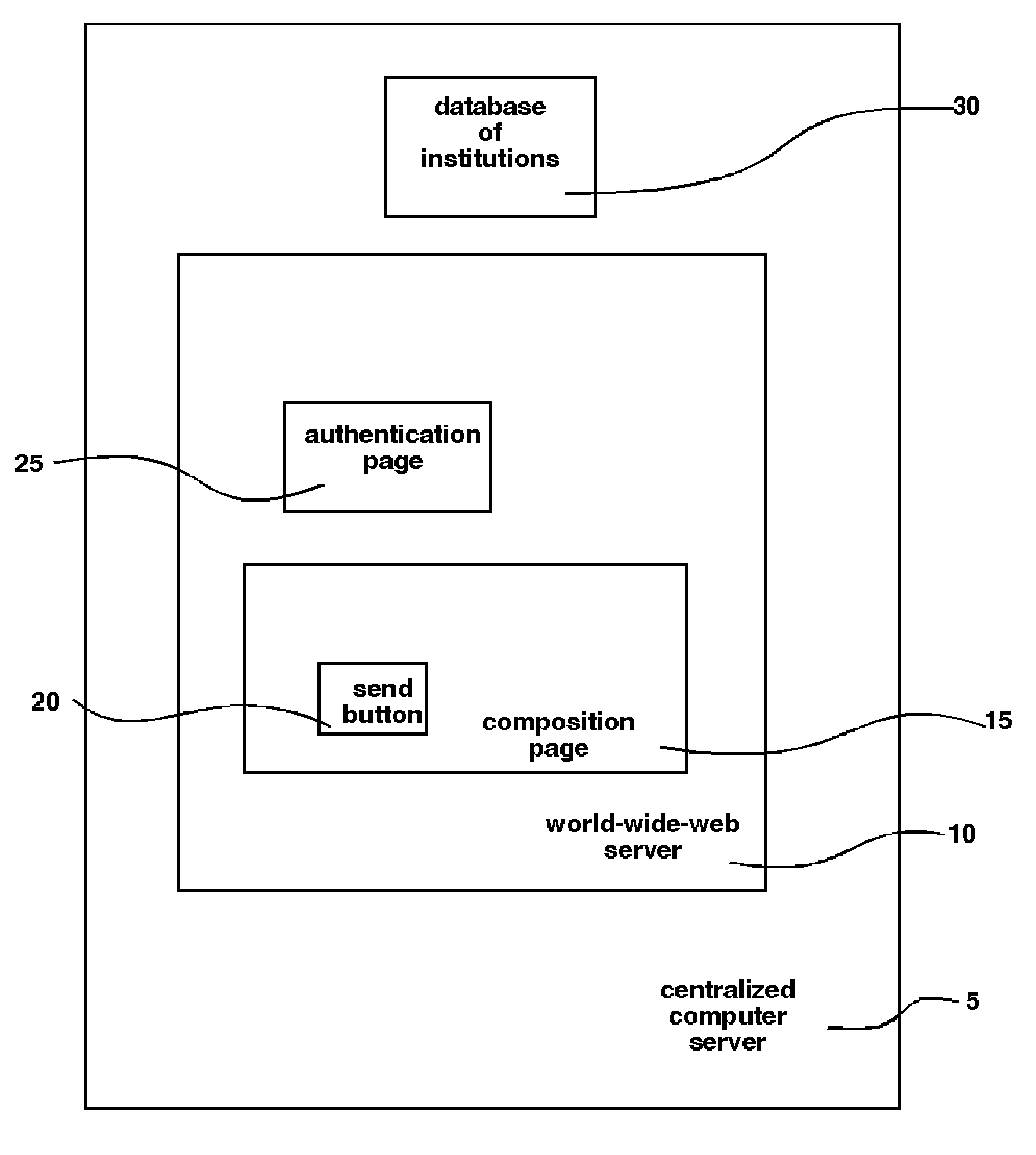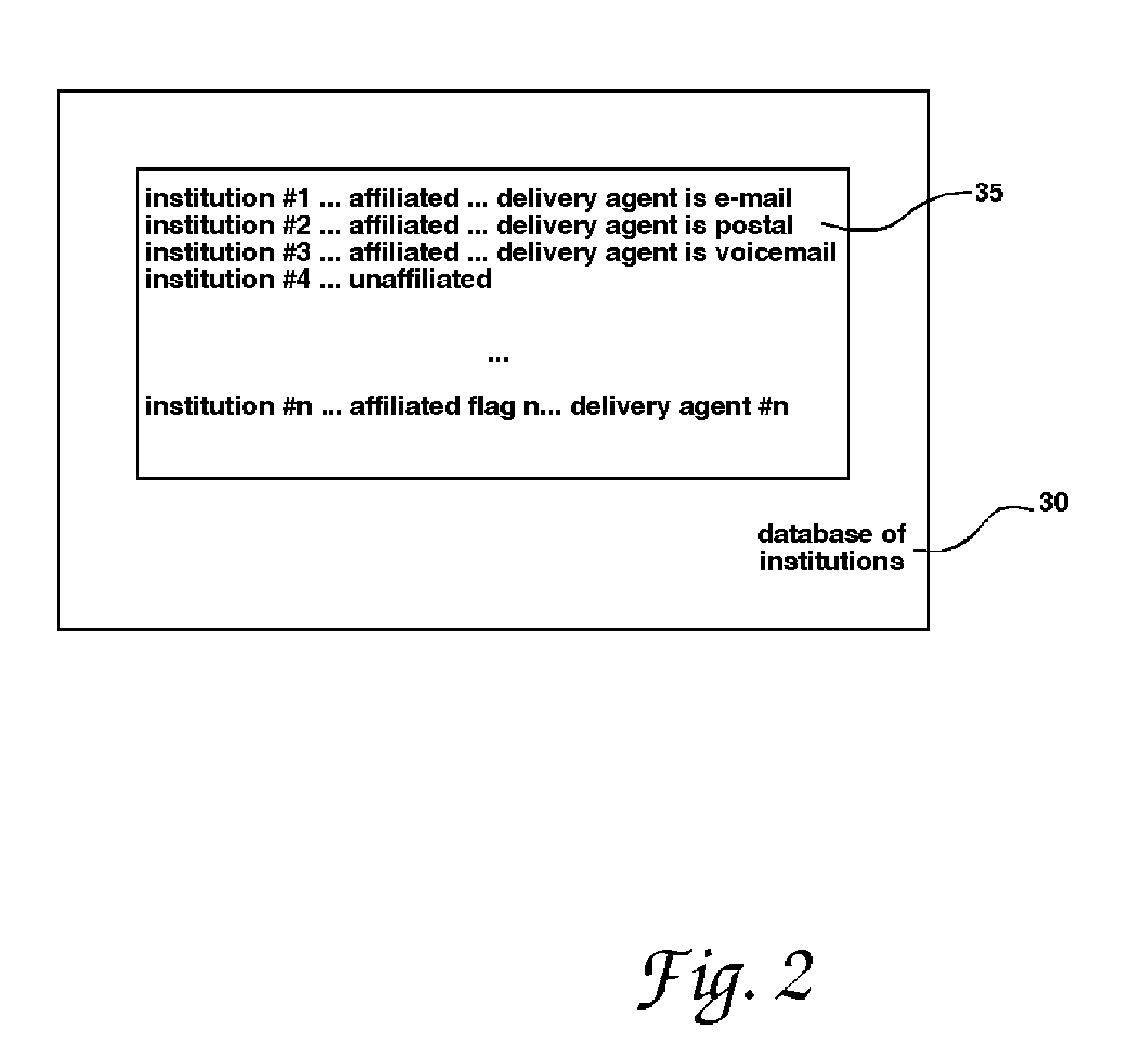Institutional electronic messaging system
a technology of electronic messaging and institutions, applied in the field of institutions electronic messaging systems, can solve the problems of ineffective or useless traditional telephone systems, difficult content monitoring, and inability to use traditional billing systems in such environments, and achieve the effect of accurate and secure delivery of reply messages
- Summary
- Abstract
- Description
- Claims
- Application Information
AI Technical Summary
Benefits of technology
Problems solved by technology
Method used
Image
Examples
Embodiment Construction
[0009]FIG. 1 shows generally the preferred embodiment of the present invention. Referring to FIG. 1, the centralized computer server 5 function as the world-wide-web server 10, which hosts the web-based system of the present invention. The web site includes an authentication page where users of the service identify themselves and authenticate by providing an authorized user name and password. Users have access to a number of functions while logged on including the ability to read mail and compose new messages. The composition page 15 is available to compose new outgoing messages by a variety of means, including typing the new message directly in using the page or copying and pasting message text written with another tool. Once a suitable message is composed, the message is transmitted to the system with the send button 20.
[0010]Part of the message composition includes addressing the message to an appropriate recipient, a member of an institution known to the system. The system exami...
PUM
 Login to View More
Login to View More Abstract
Description
Claims
Application Information
 Login to View More
Login to View More - R&D
- Intellectual Property
- Life Sciences
- Materials
- Tech Scout
- Unparalleled Data Quality
- Higher Quality Content
- 60% Fewer Hallucinations
Browse by: Latest US Patents, China's latest patents, Technical Efficacy Thesaurus, Application Domain, Technology Topic, Popular Technical Reports.
© 2025 PatSnap. All rights reserved.Legal|Privacy policy|Modern Slavery Act Transparency Statement|Sitemap|About US| Contact US: help@patsnap.com



